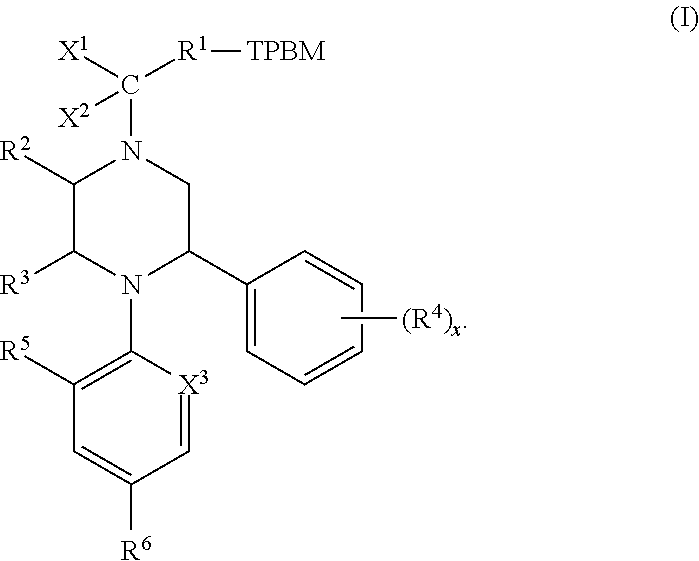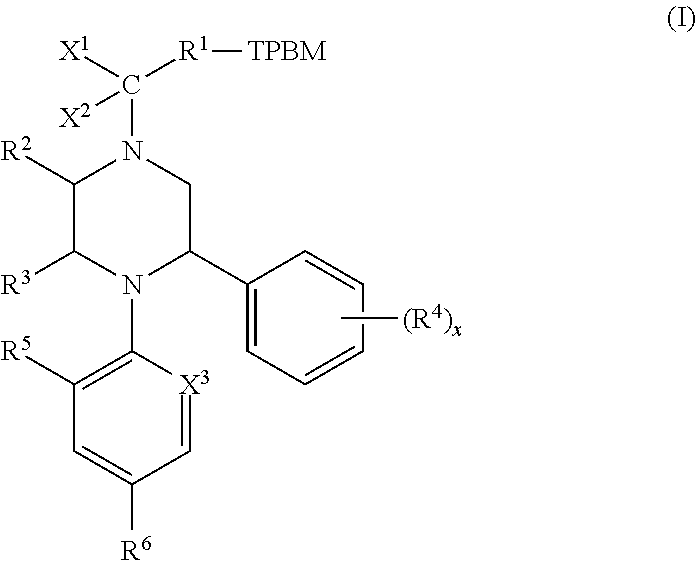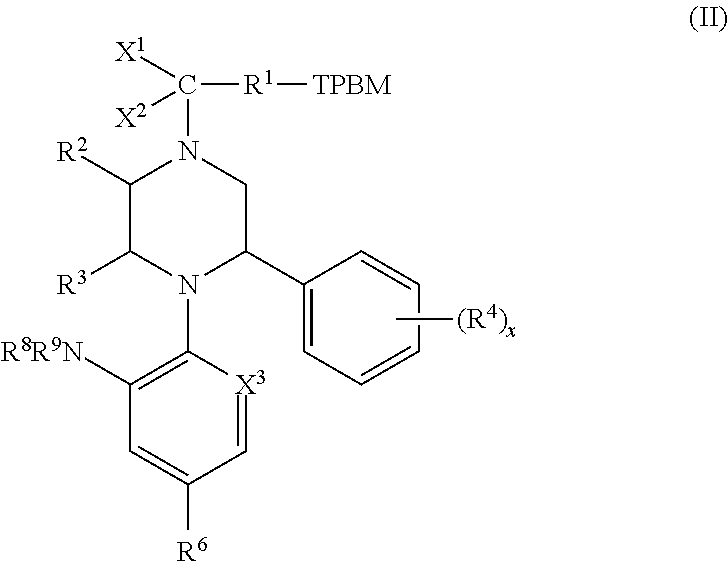Therapeutic compounds and methods of use thereof
a technology of therapeutic compounds and active ingredients, applied in the field of therapeutic compounds, can solve the problems of frequent failure of new target molecules
- Summary
- Abstract
- Description
- Claims
- Application Information
AI Technical Summary
Benefits of technology
Problems solved by technology
Method used
Image
Examples
example 1
Identification of the Ubiquitination Moiety
[0294]Using biophysical fragment screening techniques, fragments were identified which bind to MDM2. For example, protein NMR studies and thermal shift assays were performed to analyze the fragments binding to MDM2. These fragments were then further modified and optimized to generate more potent MDM2 binders.
example 2
Synthesis and Characterization of MDM2 Binders and AURKA-MDM2 Degraders
General Procedures for the Synthesis of N-(hetero)aryl piperazine Scaffolds
[0295]
[0296]The SnAP (Stannyl Amine Protocol) reagent (1.0 equiv.) was treated with 4-chlorobenzaldehye (1.0 equiv.) in anhydrous CH2Cl2 in the presence of 4 Å molecular sieves. The reaction mixture was stirred for two hours and filtered through a short layer of celite. The resulting solution was concentrated in vacuo to afford the imine. Separately, a mixture of anhydrous Cu(OTf)2 (1.0 equiv.) and 2,6-lutidine (2-3 equiv.) were suspended in a 4:1 mixture of CH2Cl2:HFIP and stirred at room temperature for 1 h. The imine (1.0 equiv.) was added to this suspension and further stirred for 12-16 h. The reaction mixture was concentrated in vacuo and purified using flash column chromatography to afford the piperazine as the desired racemic cis isomer over 30% yield.
[0297]Mono N-Boc or N-Bn protected piperazine (1.0 equiv.) was added to a solution...
example 3
Fluorescence Polarization (FP) Experiment Procedure
[0414]The compounds binding to MDM2 were determined by a quantitative fluorescence polarization binding assay using a recombinant MDM2 protein and fluorescently labeled peptide probes using a BioTek Cytation 5 machine. Compounds were tested in 10% DMSO, 100 mM potassium phosphate pH 7.2, 100 ug / ml bovine γ-globulin, 0.02% (w / v) sodium azide and 0.01% (v / v) triton X-100. KI values of tested compounds were determined in a dose-dependent competitive binding experiment by fitting the sigmoidal dose-dependent FP increases as a function of protein concentrations using Graphpad Prism software.
Isothermal Titration Calorimetry (ITC) Experimental Procedure
[0415]ITC experiments were run on a Malvern MicroCal Auto-ITC200 or ITC200 machine. Titration experiments were run in 20 mM Phosphate, 150 mM NaCl and 1 mM DTT at pH 7.3. Compounds were loaded in the syringe and tested at mM concentrations with DMSO up to 6.5%. MDM2 protein concentrations in...
PUM
 Login to View More
Login to View More Abstract
Description
Claims
Application Information
 Login to View More
Login to View More - R&D
- Intellectual Property
- Life Sciences
- Materials
- Tech Scout
- Unparalleled Data Quality
- Higher Quality Content
- 60% Fewer Hallucinations
Browse by: Latest US Patents, China's latest patents, Technical Efficacy Thesaurus, Application Domain, Technology Topic, Popular Technical Reports.
© 2025 PatSnap. All rights reserved.Legal|Privacy policy|Modern Slavery Act Transparency Statement|Sitemap|About US| Contact US: help@patsnap.com



